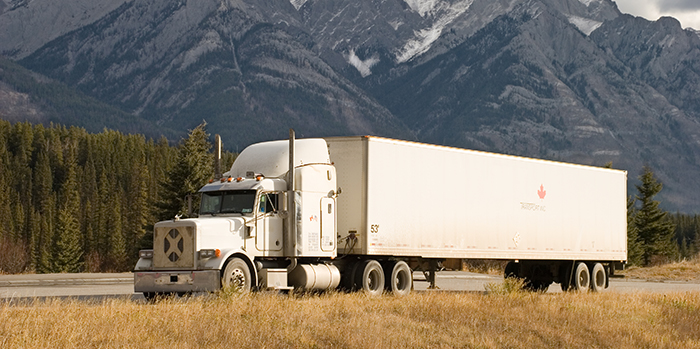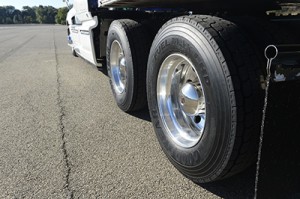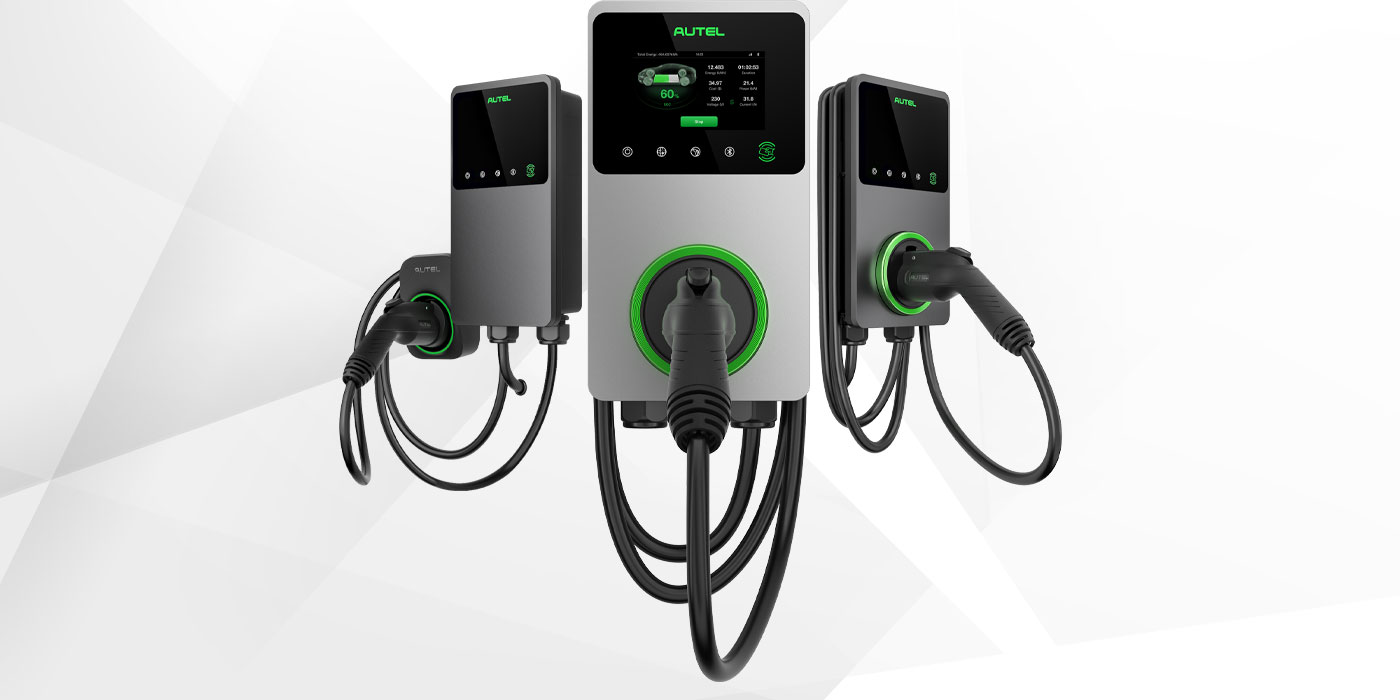 In all applications – from a truck running dried goods coast-to-coast to the beer truck delivering frothy kegs to the local watering hole – drive axle tires are constantly working to keep trucks moving. The drive tire’s primary responsibility is to harness and convert the energy transmitted from the engine through the driveline and the axle assembly into forward motion, all while under a massive load. It accomplishes that task by turning friction into traction.
In all applications – from a truck running dried goods coast-to-coast to the beer truck delivering frothy kegs to the local watering hole – drive axle tires are constantly working to keep trucks moving. The drive tire’s primary responsibility is to harness and convert the energy transmitted from the engine through the driveline and the axle assembly into forward motion, all while under a massive load. It accomplishes that task by turning friction into traction.
For that reason, drive tires are built differently than steer and trailer tires, at least from the belt package up through the deep tread blocks. In order to handle the unique pressures of the drive axle position, drive tires feature deeper tread depths and a higher ply count than steer or trailer tires.
Below the belt, the truck tire’s casing is “essentially the same” whether it’s steer, drive or trailer, says Yokohama Tire Corp.’s vice president of sales Rick Phillips.
“Every single mile, a drive axle tire is under strain,” Phillips says. “A drive tire has the constant torque from the engine to keep driving the vehicle forward. And, with a very heavy load standing still, the drive tire has to receive all the torque coming down the driveline – it puts a lot of strain on the sidewall of the tires.”
Today’s drive tires are not only built with these strains in mind, but they’re also designed to cater specifically to the application in which its being used. Complicating the sale a little bit more for commercial tire dealers are application-specific products, new tractor configurations, and new vehicles.
Application Matters
In recent years, the commercial truck industry has segmented itself into many different applications. Truck OEMs are developing more products that focus on specific applications, and these vehicles constantly evolve and change with the introduction of newer and newer products. Commercial tire R&D and product development, likewise, has evolved to focus on those needs.
“Tire manufacturers are much better at catering to fleets today because they built so many application-specific tread patterns and compounds,” says John Hull, national truck tire sales manager for Alliance Tire Americas, which sells and markets Aeolus commercial tires in the U.S. “In the past, when someone was looking at a drive tire, he was interested in mileage, traction and retreadability. Now, it really depends on which application are you operating in?”
In general, the following is a breakdown of three major applications. Long-haul applications use tires optimized to perform 100% over-the-road. Regional application tires can handle the demands of over-the-road service and short-run urban routes. Mixed service trucks run on tires that have excellent traction on loose roadway materials such as dirt, mud or gravel.
The first major difference between these tires comes in the form of the shoulder. Linehaul applications generally feature a closed shoulder design, according to Patrick Gunn, director of commercial tire sales and marketing for Giti Tire (USA) Ltd., which markets GT Radial tires in North America.
“Solid shoulders allow manufacturers to put a deeper tread on the tire. It also combats irregular wear resistance,” he says.
Regional tires feature an open shoulder design that allows the tire to corner without stress in urban or vocational services and gives operators more traction due to a larger, aggressive footprint. Regional fleets also utilize higher torque vehicles when compared to linehaul trucks, which is why an open shoulder performs better in regional applications, Gunn says.
Smaller Vehicles Emerging
Complicating the regional segment is a new trend: the introduction of smaller work vehicles for use in local applications, such as pick-up and delivery. These vehicles include Ford Transit vans, Mercedes-Benz Sprinter vans, Ford F-450 and Ford F-550 trucks, and the Chevy City Express vans. These vehicles are coming OE with commercial truck tires.
“There are changes in the size of the vehicles that are being used in P&D service,” Pat Tripp, director of truck tire product for American Tire Distributors, which markets Hercules and Ironman brand medium truck tires. “And they’re coming with a commercial tire on them, but it’s in a passenger size. So, what you see happening is people putting car tires back on in a commercial application.”
The obvious danger of installing the wrong tire on these vehicles is weight; the incorrect load rating could be dangerous. Tripp warns commercial tire dealers to seek training from tire manufacturers and distributors on these new vehicles and freshen up their load rating knowledge.
“Dealers put themselves at risk if they’re taking a tire that’s truly not designed for the service that vehicle is designed for,” Tripp adds. “Everyday there are new vehicles coming from the OEMs that can carry higher loads or require higher speed ratings and there are tires out there that fit but don’t meet the performance ratings the vehicles require.”
Linehaul Trends Influence
Another new phenomenon is occurring in linehaul applications. Fleet owners seeking fuel efficiency gains are turning to vehicles with more powerful engines and different axle configurations in order to snag savings.
Tractors set up in a way to offer fleets a fuel advantage are incorporating 15-liter engines, which are more powerful and send a lot more torque down the driveline to the tire.
“When you run a deep drive tire – anywhere from 26/32nds to 30/32nds – that high torque on the tire and the rotational energy hitting the tread design on the road tends to accelerate some irregular wear patterns on the tires,” Brian Buckham, commercial brand marketing manager for Goodyear, says.
In these cases, Goodyear and other tire manufacturers recommend a drive tire with a shallower tread depth. “Around 24/32nds,” says Buckham. “They’ll get better mileage because they’re not going to have a tendency to suffer irregular wear.”
Buckham also recommends shallower tread depths for another trend in linehaul applications: a 6×2 axles on fuel-efficient tractors. This axle configuration offers truck operators weight savings at the tradeoff of traction.
“Essentially the 6×2 axle configuration means that there are six wheel positions on three axles and the tractor is carrying 80,000 pounds with only one axle pulling it,” Buckham says. “You can’t put a deep-lug drive tire on that single drive axle because you’ll get irregular wear.”
The solution? Equip a drive axle with a shallower tread depth – 24/32nds – and, Buckham notes, replace the “dead” axle with a trailer tire.
“That other axle that used to be a drive axle is dead – it’s just there to hold air and hold up the trailer,” Buckham says. “Goodyear recommends putting trailer tires on it because it’s just rolling like a trailer does. That way you’re not putting expensive drive tires on the axle and wearing them out when you don’t need to.”
SmartWay Traction
Even with falling fuel prices, tire manufacturers are still targeting excellent fuel-efficient tires. In fact, tire manufacturers are beginning to introduce SmartWay product into applications other than linehaul.
“More and more, even with the fuel prices coming down, people are still looking for the most fuel-efficient tire,” Mike Kurk, manager of Brahler’s Truckers Supply in Palmyra, Mo. “With fuel being one of the trucking industry’s largest expenses, I don’t see that ever going away.”
This concern is stretching into the regional service fleets, and tiremakers are introducing SmartWay product specifically for regional service applications.
SmartWay-approved drive tires feature different rubber compounds than non-SmartWay-approved tires and also have shallower tread depths. According to Giti’s Gunn, the tire industry should expect to see more emphasis on shallow-tread drive tires.
“The drive tire is reverting back to shallower tread depths for better fuel economy,” he says. “You get lower rolling resistance out of a stabilized tread platform, and it’s stabilized because the tread is shorter and anchored at its base. In the future, we’re looking at the 26/32nds rather than the 28-, 30- or 32/32nds.”
Commercial tire dealers that focus on applications and new trends stand much to gain by being a partner and expert for truck operators to rely on.













